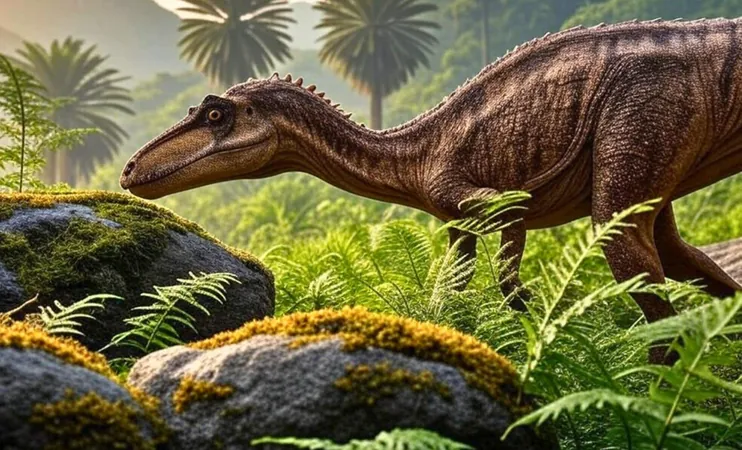
Groundbreaking Discovery: Meet Archaeocursor asiaticus, a New Player in Asia’s Dinosaur Evolution!
2024-12-28
Author: Ting
Paleontologists have unveiled a stunning new species of herbivorous dinosaur that is set to change our understanding of the Early Jurassic era. Meet Archaeocursor asiaticus, a small but mighty plant-eater discovered in the remote southwestern region of China. This intriguing find not only enriches Asia's limited ornithischian fossil record but also offers evidence of complex migration patterns of dinosaurs over 190 million years ago.
A Miniature Dinosaur with Major Implications
Archaeocursor asiaticus, measuring only 1 meter (3.3 feet) in length, is classified within the Ornithischia group, which later produced notable species like stegosaurs, ankylosaurs, and ceratopsians. Dating back to approximately 193 million years, this dinosaur holds the title of the earliest-diverging ornithischian identified in Asia, making its discovery particularly significant for paleontological research.
The key fossil, a well-preserved left femur, was unearthed from the Ziliujing Formation in Chongqing, China. Its unique anatomical features provide pivotal insights into the evolutionary lineage of ornithischians and their dispersal across continents during a formative period in Earth's history.
Revealing Connections to Gondwana
What’s particularly fascinating about Archaeocursor asiaticus is its anatomical resemblance to Eocursor parvus, a species from the ancient southern supercontinent of Gondwana. This suggests that ornithischians may have migrated from Gondwana to Laurasia, including East Asia, during the Early Jurassic period—an event that predates the arrival of armored dinosaurs in the region.
Researchers argue that this migration might have occurred independently of other dinosaur dispersals, challenging the conventional narrative of dinosaur evolution. They propose that Archaeocursor asiaticus could represent a cosmopolitan lineage of early ornithischians, which spanned vast distances across different continents.
“As a result, we see evidence of an earlier dispersal event, suggesting that Early Jurassic ornithischian dinosaurs could have moved from Gondwana to Laurasia, including East Asia—possibly before the well-known armored dinosaurs appeared there,” the research team posited in their study.
Groundbreaking Findings and Future Research
The study brought forth several crucial discoveries, including: - Evidence of an independent migration route for ornithischians into East Asia during the Pliensbachian age. - Potential evolutionary links between Gondwanan and Laurasian species, suggesting a wider lineage of early dinosaurs. - A hypothesis proposing a global clade that is phylogenetically situated between two well-known groups: Heterodontosauridae and Thyreophora.
While these findings are groundbreaking, the researchers acknowledge that the study's reliance on a single, fragmentary femur limits the conclusions that can be drawn. More discoveries are needed to substantiate the relationships and migration paths proposed by this research.
The unveiling of Archaeocursor asiaticus significantly expands our understanding of Asia's dinosaur history and poses new questions about the environmental and ecological factors that shaped the migrations and adaptations of these early creatures. This discovery not only stimulates further interest in the region’s paleontological wealth but also underscores the importance of continued exploration and study in unlocking the secrets of our planet’s prehistoric past.

 Brasil (PT)
Brasil (PT)
 Canada (EN)
Canada (EN)
 Chile (ES)
Chile (ES)
 Česko (CS)
Česko (CS)
 대한민국 (KO)
대한민국 (KO)
 España (ES)
España (ES)
 France (FR)
France (FR)
 Hong Kong (EN)
Hong Kong (EN)
 Italia (IT)
Italia (IT)
 日本 (JA)
日本 (JA)
 Magyarország (HU)
Magyarország (HU)
 Norge (NO)
Norge (NO)
 Polska (PL)
Polska (PL)
 Schweiz (DE)
Schweiz (DE)
 Singapore (EN)
Singapore (EN)
 Sverige (SV)
Sverige (SV)
 Suomi (FI)
Suomi (FI)
 Türkiye (TR)
Türkiye (TR)
 الإمارات العربية المتحدة (AR)
الإمارات العربية المتحدة (AR)